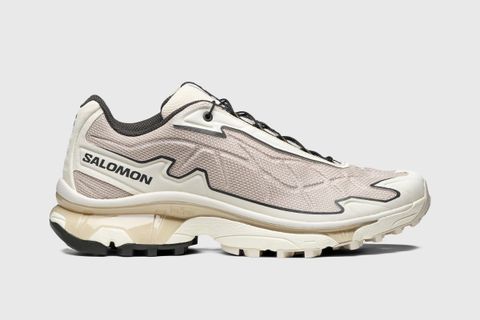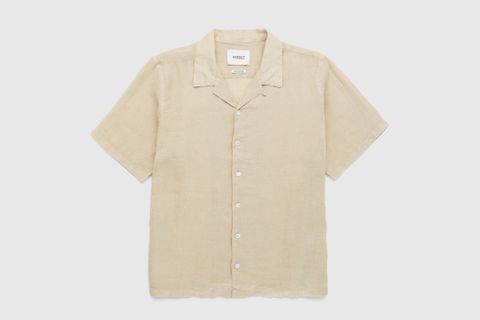Is Birkenstock's Madrid the New Boston?
In 2022, the impossible happened: Birkenstock became a hyped footwear brand, thanks to sudden, explosive demand for its Boston clog. All that buzz around the closed-toe sandal has paved the way for heightened interest in all the classic Birkenstocks — and I believe the original Birkenstock has got next.
I'm talkin' 'bout Birkenstock's Madrid sandal, the oldest still-produced model in the German shoemaker's lineup.
Family heir Karl Birkenstock harnessed what he described as brutalist design principles when creating the shoe (seriously): that's why the Madrid is ultra-minimalist, nothing more than Birkenstock's footbed and a single, thin strap. Really, the footbed was Karl's invention; the strap was necessary utility.
But, if it works, it works. The Birkenstock Madrid, which turns 60 in 2023, has barely been updated at all. It's received a few aesthetic upgrades, sure, but the Madrid you see in 2023 is nearly indistinguishable from the 1963 original.
Though it's been perpetually popular, the Madrid has never been quite as widely sought-after as Birkenstock's Arizona — a fixation for 2019's VSCO Girls — or Boston — craved by everyone — though I suspect that 2023 will be the Madrid's year.
And, not to keep downplaying the subject, but I'll admit that even on its best day, the Madrid, less a shoe than a vehicle for a footbed, will probably not hit the same way that Birkenstock's Boston did in 2022. That was a once-in-a-lifetime surge, something no one ever really plans for.
Still, between the seasonal shift towards "naked" (read: barely-there) footwear and Birkenstock's heightened cultural goodwill, the Madrid is sitting (or standing) pretty.
With the Boston still at critical mass, it provides a readily-available alternative to the sandal du jour. And the Madrid is different enough from the Boston and Arizona — as opposed to the clog-ish London and Tokio shoes — to hit the spot for someone seeking something fresh.
I'm sensing sleeper hit status, unless the Madrid gets the big-name collaboration it deserves.
One of the Madrid's big selling points, for instance, is that it's more "feminine" than the Boston: whereas the latter is gawkishly chunky, Birkenstock's Madrid is sleek, slight. Nothing will replace Birkenstock's Boston, but the Madrid doesn't have to; as a totally different style, it lives in harmony with its beefier, closed-toe sibling.
The Madrid is even more delicate than the Arizona, which is at odds with the narratives that kept Birkenstock out of fashion's good graces.
See, the unadorned humility of Birkenstock's orthopedic sandals has mostly kept the company at odds with mainstream audiences over the course of its 150-year lifespan.
But collaborations with luxury fashion houses and culture-defining streetwear labels alike, plus the world-conquering success of the long-awaited Birkenstock break-through have enlightened the rest of the world to what fans, myself included, have long since understood about Birkenstock: great shoes are trend-resistant.
Perhaps the one factor holding Birkenstock's lesser-known styles back from mainstream success was that the company's unassuming shoes were once unfairly stigmatized as "ugly."
Now, me personally, I nothing but beauty in the unadorned directness of Birkenstock's sandals but, for years, that was not a popular position.
With the Boston clog opening the door, though, a fresh cadre of fans are making up for lost time by adopting all the Birkenstocks that were previously, pointlessly pooh-pooh'd.
Tied to both the anniversary and launch of fresh in-line models, the promotional push for Birkenstock's simplest sandal perfectly positions the Madrid to reach a new crowd.
Plus, in a year lousy with headlines bandying about the rise of quiet luxury, Birkenstock's Madrid actually is a subtly stylish companion, especially in its elevated 1774 iterations.
And, even when that trend is terminé, the original Birkenstock will still be around. The Madrid has hardly changed over the past 60 years, after all, and why should it? Really, at this point, it's just one collab (or two) away from breaking through.


